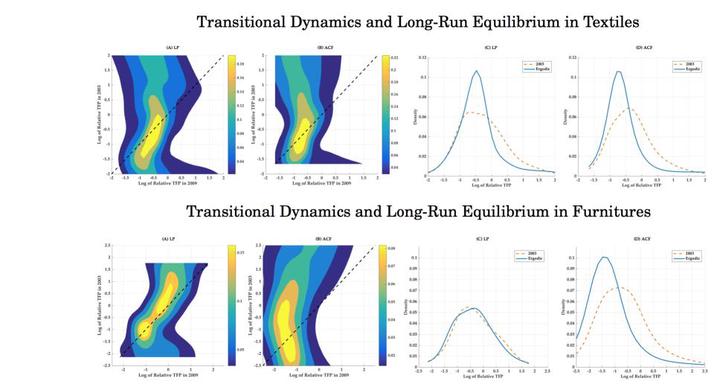A Comparison of TFP Estimates via Distribution Dynamics: Evidence from Light Manufacturing Firms in Brazil

Abstract
This article compares the distribution dynamics of two commonly used TFP estimation frameworks: the control function approach of Levinsohn and Petrin (2003) (LP for short) and the corrected control function approach of Ackerberg et al. (2015) (ACF for short). Using Brazilian firm-level data for the textile and furniture sectors, we estimate the transitional dynamics and long-run equilibrium of the TFP distribution for each framework over the 2003-2009 period. Results of this comparison are as follows. In the textile sector, the distribution dynamics for both frameworks are to some extent qualitatively similar. In the furniture sector, however, the distribution dynamics are largely different. While the LP framework shows relatively less mobility, two convergence clusters in the transition stage, and a bumpy distribution in the long run; the ACF framework shows relatively more backward mobility, a unique convergence cluster in the transition, and a highly symmetric distribution in the long run. In light of these results, the article concludes urging researchers not to rely too heavily on one or the other framework. It seems more appropriate to consider both frameworks for drawing inferences on productivity convergence and dispersion dynamics.